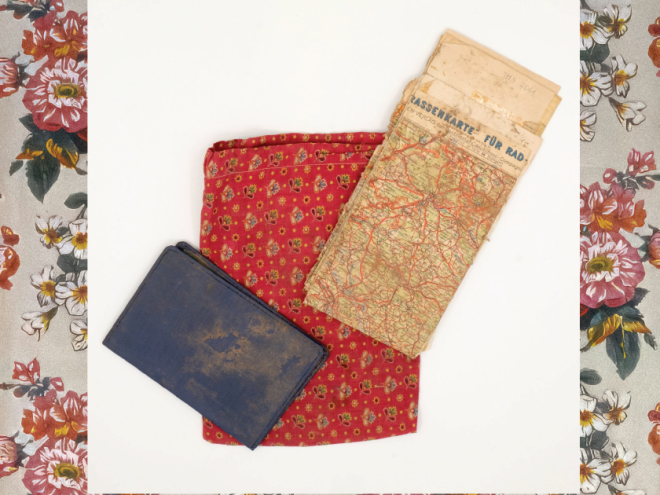Two qualities helped to make Italian competitive cyclist Gino Bartali a hero: speed and courage. The first quality was almost certainly innate and the second may have been as well. Practice strengthened both attributes. Under the dictatorship of Benito Mussolini, Hitler’s ally, legal persecution of Jews was established in Italy, and Bartali was confronted with a choice; would he remain silent while his friends and neighbors were subjected to the new terror or would he use his talent to help them? This beautiful and informative new picture book biography of Bartali encourages young readers to empathize with his dilemma and to understand the incredible bravery of this quiet and modest man.
From the beginning of the book, Bartali appears as both ordinary and unusual at the same time. Leaning forward on his racing bicycle, he is a smiling figure, appearing almost awkward in his argyle socks and matching sweater vest, popular in his era. His features are somewhat exaggerated and his thick, unruly hair blows in the wind. Megan Hoyt describes his training routine as “eight long years” of endurance and motivation, riding across every type of terrain in Italy. When he wins the ultimate cycling competition, the Tour de France, in 1938, his refusal to accept the designation of “hero” is prescient, in light of the catastrophe soon to engulf the world: “No, no, no! Heroes are those who have suffered. I am just a cyclist.”
The book is carefully calibrated for its target audience, providing essential information about the rise of fascism in Europe dramatically, but without unnecessary detail. Strong verbal imagery conveys the sense of impending catastrophe for Italy’s Jews: “Tanks belched out thick smoke onto Italy’s beautiful cobbled streets. Sirens screeched. Bombs fell. And the strange new ideas became even stranger.” The book’s graphic design intensifies these statements. Readers identify with a man like Bartali who admits he is frightened, but weighs his fears against the consequences of inaction.
Iacopo Bruno’s glorious illustrations allude to graphic styles of the thirties and forties. Each picture is like a movie still or a poster, with the collective effect a dramatic sequence of events unrolling. In one scene, Bartali and his ally, Archbishop Elia Dalla Costa, face a wall of documents, each one a false identity card with the potential to rescue Jews from capture and deportation to concentration camps. Readers see Bartali and the archbishop in half-profile. Bartali grips the handlebars of his bicycle while Dalla Costa points to the identity paper, on which Bruno has drawn sketches simulating photographs. Each sketch represents an individual although Bartali must view them collectively. Another two-page spread shows Bartali, his face furrowed with anxiety, distracting fascist guards by signing autographs for his fans. The guards are almost mechanized images of evil, their green-hued skin matching their uniforms and their eyes obscured completely by their caps’ visors. Meanwhile, in the other half of the picture, “…resistance workers secretly ushered Jewish families onto different trains.” Detailed realism and metaphor coexist in these pictures.
There are many stories about quiet heroes whose lives embody the ideal of bravery as its own reward. After the war, Bartali returns to his family life and his career as a cyclist, winning the Tour de France for a second time. “Good is something you do, not something you talk about,” is one of several quotes chosen by Hoyt that succinctly summarize Bartali’s life philosophy. Thanks to this wonderful picture book biography, his enormous contribution emerges from the quiet background, where he preferred to keep it, and serves as a lesson to the world.
This highly recommended book includes a timeline, a list of sources, an author’s note, and a moving afterword by Lisa Bartali, Gino’s granddaughter.
Emily Schneider writes about literature, feminism, and culture for Tablet, The Forward, The Horn Book, and other publications, and writes about children’s books on her blog. She has a Ph.D. in Romance Languages and Literatures.




